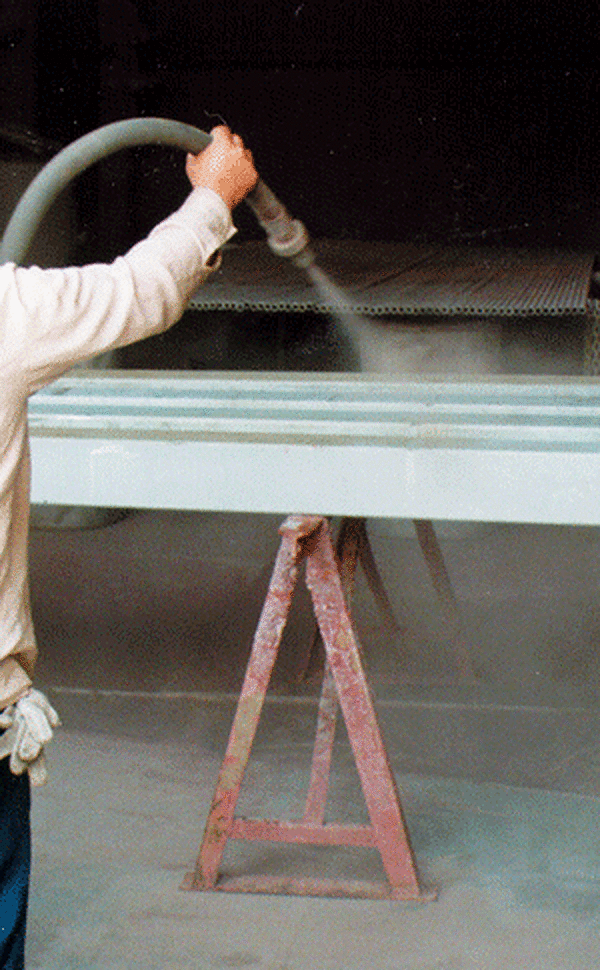Abrasive Blasting
In the galvanizing process, all interior and exterior surfaces are coated with corrosion-inhibiting zinc, which metallurgically bonds with the base steel. This metallurgical bond occurs if all surfaces to be galvanized are entirely clean.

The primary method for cleaning surfaces at the galvanizing facility is to immerse the steel in chemical pretreatment baths.
When chemical cleaning is not anticipated to be effective due to the presence of mill lacquer, paints, markings, weld slag, or sand (used in the making of castings), abrasive blasting may be suggested.
Your galvanizer may or may not have abrasive blasting capabilities. Because time and money are saved by first clarifying this issue prior to delivering the steel to the galvanizing facility, it is wise to consult your galvanizer if abrasive blasting may be needed.
It is important to note that while abrasive blasting is effective for cleaning exterior surfaces, it cannot effectively remove materials in small crevices, threads, or on hidden surfaces such as the inside of a pipe. Parts with these types of configurations might benefit from chemical cleaning, in addition to abrasive blasting.
